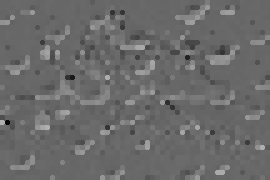Microscopy has its origins from small lenses being put together for astronomy and then used for magnifying the small particles in a lake. Microscopy enabled the discovery of much what we know about cells, organelles and the function. It has also helped in the diagnosis of diseases – one of the earliest one being the discovery of the Spirochetes that caused Syphilis and also other bacterial diseases. In physics, it led to the understanding and discovery of Brownian motion. In many cases, though the resolution was lacking, many of the scientists observed a change in the pattern of images that they saw their microscopes.
That change in pattern has been used through microscopy till the resolution become higher and higher and we could name, identify and classify the objects that we saw.
However, many times during drug discovery, scientists have gone back to just measuring changes. In drug discovery for example, an instrument made by Corning called Cellkey measures the change in electrical resistance between the medium of cell growth and the surface of the medium. The change in resistance presumably is determined by a multitude of factors including shape of the cell and cytoskeleton.
Shimmer microscopy is another such area though the physics is complicated. A hologram is an interference pattern between two waves of monochromatic light. Holography has been used in the past to recreate a 3D shape of an object but also as a very sensitive detector of change. David Nolte at Purdue University has used this detector of change to see whether cancer cells change upon treatment. The advantages are many – any drug that causes a change in the characteristics of the cell causes a change in response. The scientist does not have to know what that change is or even what caused it. The change in the shape or size of the granules/organelles could be the reason and that would trigger the holographic response. The physics is superb – being able to project the holographic image on the surface of a CCD and record that image is great and deserves the NSF funding for its technical capability.
However, the biological relevance is dubious. Cells change all the time – organelles move, there is Brownian motion and many other cellular activities. The time the activity might stop or just resort to Brownian motion will be when the cell is dead. So, this technique is a dead cell marker primarily. But since there are many other techniques that can quantify dead cells, even in narrow tissue sections, the classification of this technique for anticancer drug analysis is farfetched. In addition, if the drug has no effect on the cell then the cell would change too. So, a cancer cell would divide and form two cells. That is also change and will be picked up by this technique. There may be a very narrow window when such analytical method will be useful but that has not been defined in the work.
The path of science discoveries is interesting. This is a good technique and will find its use in biology and it will be different field or area that realizes its true potential.
